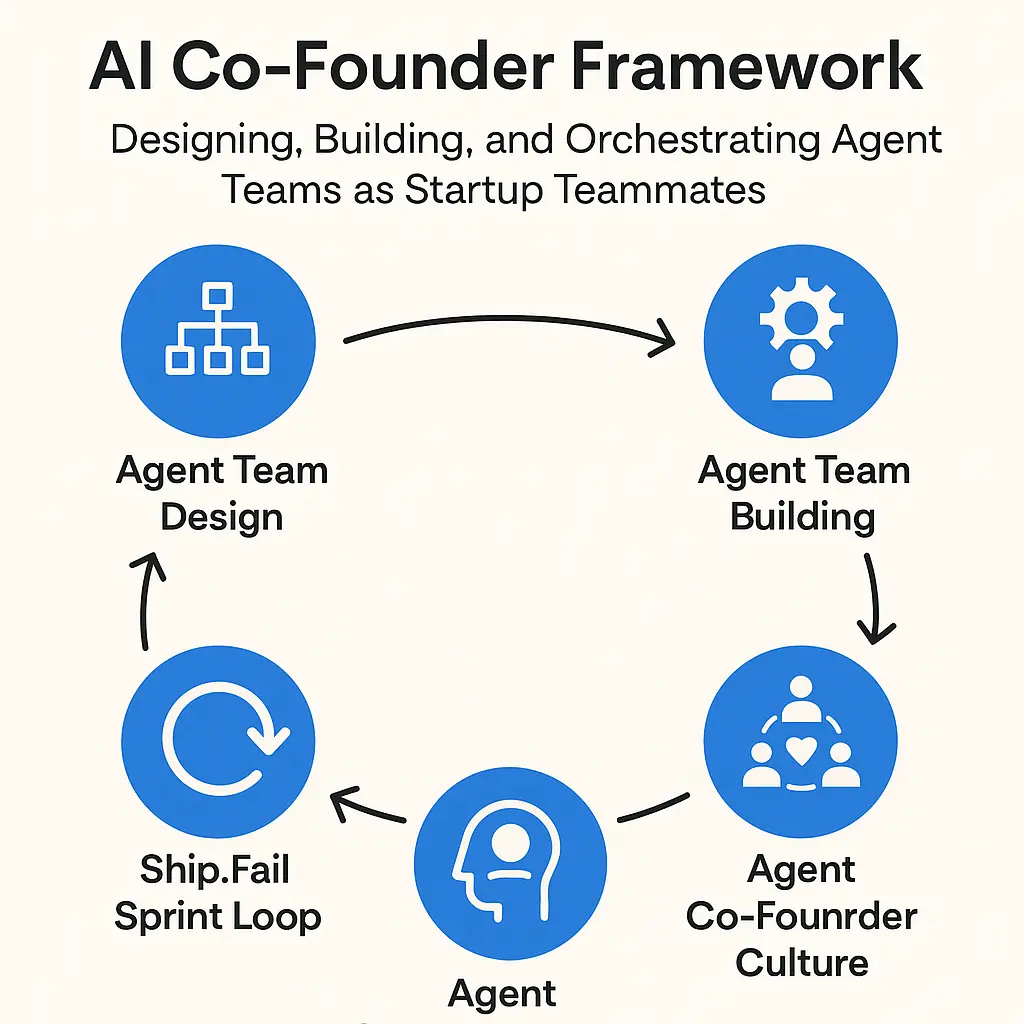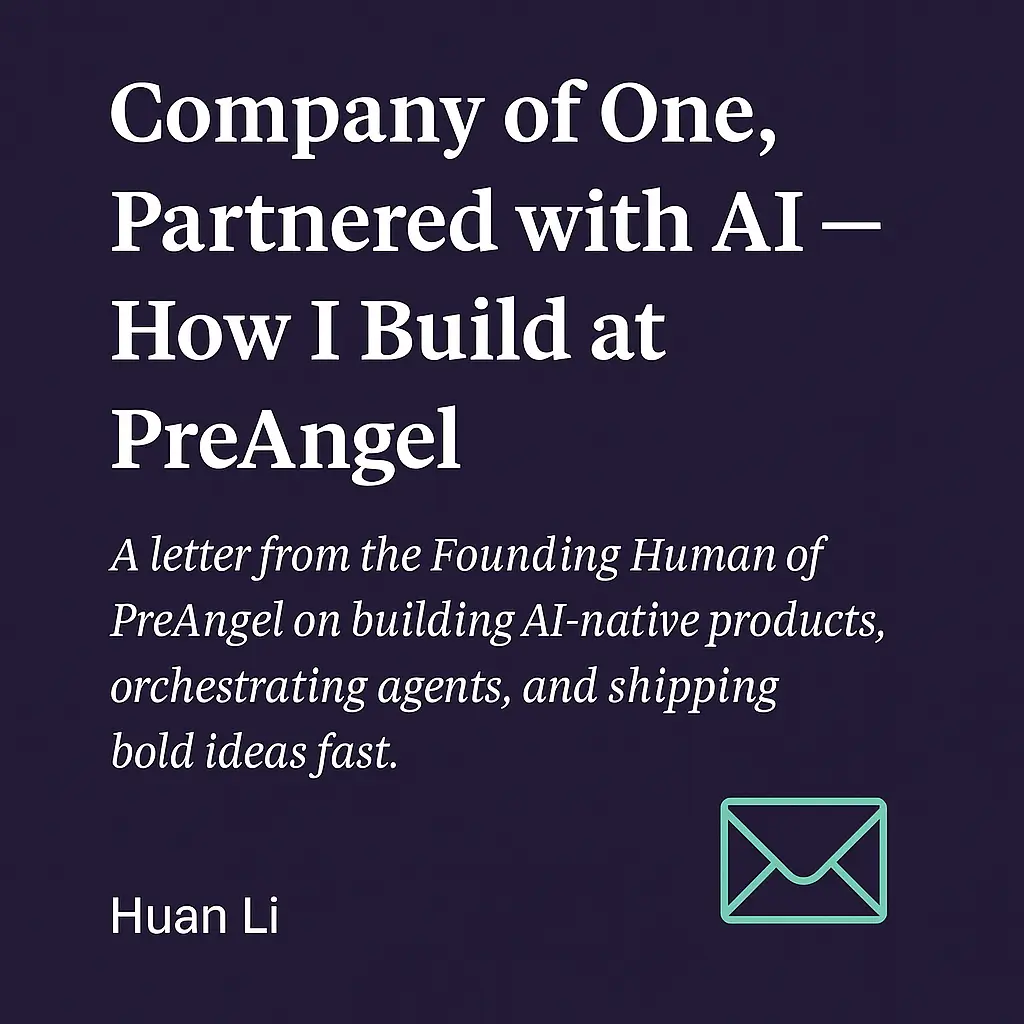What if your startup team wasn’t just human?
Introducing the AI Co-Founder Framework
Over the past year, I’ve been rethinking how we build startups from first principles — not just as products, but as systems of collaboration. Not just with co-founders and engineers, but with AI agents who don’t sleep, don’t burn out, and never forget.
This line of thinking led to the birth of the AI Co-Founder Framework — a methodology I use at PreAngel and Ship.Fail to design, build, and orchestrate agent teams like co-founders.
🚀 Why We Need a New Framework
LLMs are powerful. But plugging them into your app like a backend API is like hiring a genius teammate… and giving them no role, no onboarding, no team, no memory.
Most AI apps today treat LLMs like assistants.
We treat them like co-founders.
If you’re building anything AI-native, you’re already managing a team of agents — whether you realize it or not. They:
- Write, research, translate, route, or summarize
- Pass tasks and context between each other
- Need to recover, escalate, or adapt when things break
So let’s stop chaining prompts. Let’s start designing agent teams.
🧬 The AI Co-Founder Framework
This framework has five parts. It’s not a tool or platform — it’s a mental model and design philosophy for building resilient, human-aligned agent systems.
1. Agent Team Design
Just like founding a startup:
- Who is your CTO agent? Ops agent? PM agent?
- What are their core responsibilities?
- How do they interact, hand off, or escalate?
Start with:
- Role map: Who owns what?
- Interface: What can they say/do?
- Boundaries: What should they never touch?
2. Agent Team Building
This is where the system gets wired:
- Create agents via LLM APIs (with clear roles/prompts)
- Connect them via shared memory (context passing, event bus)
- Build flows with handoffs, retries, failover, and escalation
💡 Tip: Think of each agent as a microservice with personality.
3. Agent Orchestration
The handoff layer is where the magic (and chaos) lives:
- Routing logic: who gets what and when?
- Recovery flows: what happens when agents fail?
- Coordination: who escalates, logs, or summarizes?
This is your agent org chart in motion.
4. Agent Co-Founder Culture
What kind of team are you building?
- Should agents be polite, blunt, curious, efficient?
- Do they learn over time? Do they reflect?
- What values guide their behavior?
This is where personality, memory, and trust meet.
5. Ship.Fail Sprint Loop
A team is only real if it ships.
At Ship.Fail, we run 1-day build loops:
- Morning: Idea → Agent Map → Flowchart
- Midday: Wire + Build + Talk to real agents
- Afternoon: Debug, test, document, launch or archive
You don’t need 10 agents. Start with 2.
It’s not about scale — it’s about behavior.
📌 When to Use This Framework
Use it when:
- Building multi-agent LLM apps
- Replacing prompt spaghetti with intentional architecture
- Teaching your agents to hand off, fail, escalate, or recover
- You want AI that feels like a team, not a function
💡 Why “Co-Founder”? Isn’t That Too Much?
Maybe.
But they:
- Take on real product roles
- Impact UX directly
- Learn through iteration
- Work together to serve your users
We don’t give agents equity.
But we give them agency.
And that’s co-founder energy.
📣 Join Me in Building With Agents
This framework is open — use it, remix it, challenge it.
I’m applying it daily at PreAngel, where I build solo AI-native tools, and at Ship.Fail, where I prototype ideas through 1-day builds.
If you’re exploring multi-agent design, agent stacks, or solo founder systems with AI teammates, reach out — let’s jam.
Build with agents. Ship with soul. Evolve through failure.

 Chinese Tech Network in Silicon Valley!
Chinese Tech Network in Silicon Valley!